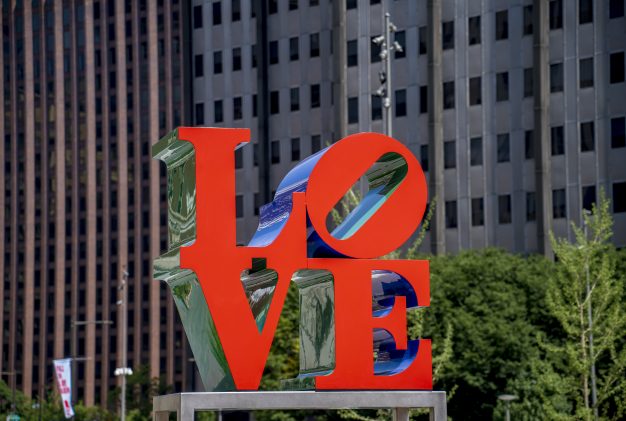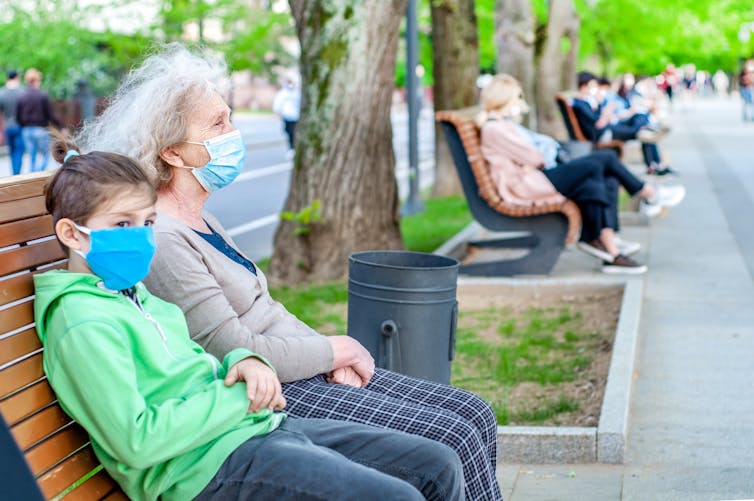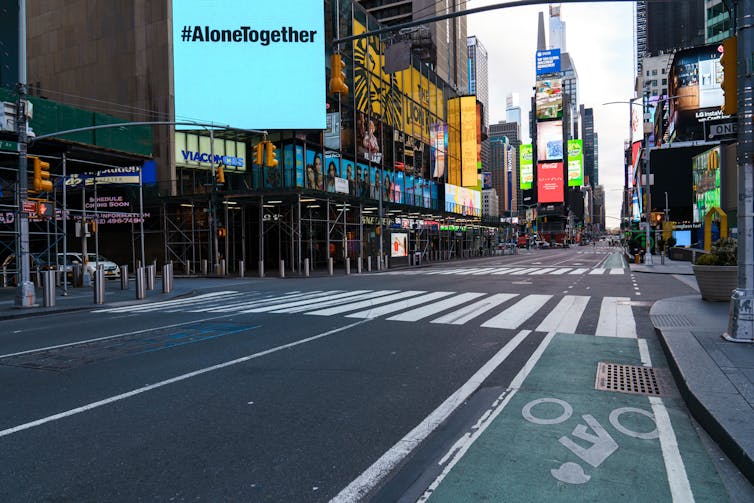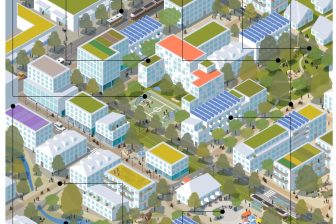
If we love our cities, we’ll make better decisions about their future after the pandemic
It’s the most famous city slogan in the world: I Love New York. And yet, surprisingly, love doesn’t seem to play a part in how urban planners build cities.
Because of the COVID-19 pandemic, the future for cities looks dire. Urban areas may empty, and the death of urban density might bring an end to mass public transit, storefronts on streets, kids jostling in schools, parks and playgrounds, and festivals in the park, writes Meg Holden, Simon Fraser University.
Throughout the modern history of urban planning, high-density living has been seen as dangerous. And with or without a global pandemic, living in dense cities carries risks, from disease to social conflict.
For some leaders, love has played a major part in the management of this pandemic. British Columbia’s Medical Health Officer Bonnie Henry refers to the need to “be kind.” And New York Gov. Andrew Cuomo’s March 24 coronavirus news briefing earned him a new moniker as the “Love Gov” when he said:
“We’re going to make it because I love New York, and I love New York because New York loves you. New York loves all of you. Black and white and brown and Asian and short and tall and gay and straight. New York loves everyone. That’s why I love New York.”
The time-tested ratio of urban risk and reward
Urban planners who study and design cities often explain them through growth, power, efficiency and grandeur. We have Charles-Édouard Jeanneret, known as Le Corbusier, with his Radiant City, Robert Moses as the “power broker” and Harvey Molotch and his “growth machine” theory.
The discipline of regional science emerged in the 1960s to render the study of cities more serious and less personal, and interest has again surged in the creation of a “science of cities.” Urban researchers Andrew Zitcer and Robert Lake, however, have asked: “What might it mean for a planner to love the people and communities that are the subject of planning?”
But what would it mean for all urban planners to confess to their love for the places they plan? And why?
As American philosopher Charles Peirce said, radical love — not competition, conflicts or challenge — is “the great evolutionary agency of the universe….” According to urbanist Libby Porter, radical love is key to decolonizing planning. One of the possibilities that opens up for urban planning when decolonized is the possibility of more explicit and even reciprocal consideration of love as method and as purpose of planning.
As a colonial practice, urban planning has always been about taking a long-term view. Decolonized urban planning, as viewed by Indigenous planners, goes further in considering planning for cities whose future residents we already love, and planning to make a gift of the city to them. Decolonized urban planning permits us to think about cities loving us back.
The three types of love for a city
Different kinds of love feed and starve our cities. This shows up in the way urbanites of many stripes are motivated differently for the work they do.
In Voices of Decline, city lover Robert A. Beauregard writes: “I grew up when the cities were dying.” He exemplifies the necrophiliac urbanist who loves cities when it seems no one else will, especially the dying parts of cities, the desperate and forgotten places of decline, disinvestment and blight. They seek to offer dignity, a sense of rights and a voice to the marginalized.
Others — optophiliacs — fall in love with the city because the city opens their eyes. In cities, optophiliacs see how richness in diversity and density overfills their cups with creative potential — best exemplified by urbanist Richard Florida’s theory of the creative class. They define urban success as a city dense with independent, multitudinous creative pursuits of all kinds.
Then there are the plutophiliacs, whose love for the city begins and ends with their love for money and the creation of private wealth. Some critics call them disaster capitalists.
Cities and the love of money
These three different varieties of urban love act as rivals for the city’s favour and the forms that this takes in the urban form, function and structure. Necrophiliac love focuses on the city’s life-support systems for the sake of the most vulnerable — its economic base, basic democratic institutions, transportation system.
While Georges-Eugène Haussmann, master urban planner of Paris in the mid-19th century, was celebrated for sanitary works that saved the city from plague, necrophiliac city lovers Marshall Berman and Neil Smith derided “Haussmannization” as the obliteration of the urban commons in favour of capitalist modernity. They suspected the sanitary planning works were a plutophilic plot to clear the slums and prevent uprisings.
Optophiliac city lovers, who express their creative love through the arts, culture and the finer details that make city life worth living, find themselves particularly scorned during this pandemic. With local shops, galleries and creative venues of all kinds shut down, boarded up and verboten, it is as if the city they love is being stolen right out of the hands they have been using to sculpt it. While sometimes shrugged off in times of crisis like this as being non-essential, the laments of the optophiles for the cities they are losing are real, too.
When the arts sector scrambles to generate ways to engage and show their work to others, despite the pandemic restrictions against gathering, this is not only an effort to earn a living — these optophiliac urbanists are fighting against a cultural retreat with far-reaching implications for cities as “the most human of all things,” as Claude Lévi-Strauss averred in Tristes Tropiques.
Plutophiliac urban lovers are the ones that cities seem both to love best, and love to hate. All of that sad dark stuff about the city we see in the present pandemic — it is their black gold. When business and political leaders rally support for cities as a necessary part of the economic recovery from the COVID-19 pandemic, it is a plutophiliac love they are invoking. As in previous disasters gone by, they are busy devising new ways to create what they love from the wreckage, and that is private wealth.
In a spirit of loving attachment to our cities, we can see these different varieties of love as offering entirely different risks, and different reciprocal gifts that our cities are likely to give back, as we recover from the pandemic. In the rich mix of urban density and diversity that inhabits all our cities, our love takes all three shapes of: a lifeline, a fount of inspiration, a cash cow.
The coronavirus has brought these different stakes in the city into sharp focus. If we can summon the courage to profess our love for the city, although it is dangerous, now as throughout history we may be better able to hone our plans so that the city of the future will love us back.![]()
Meg Holden, Professor and Director, Urban Studies and Professor of Geography, Simon Fraser University
This article is republished from The Conversation under a Creative Commons license. Read the original article.
Main image: J. Fusco for VISIT PHILADELPHIA® / EDITORIAL USE APPROVED; ©VISIT PHILADELPHIA®
Other photos by Shutterstock.






